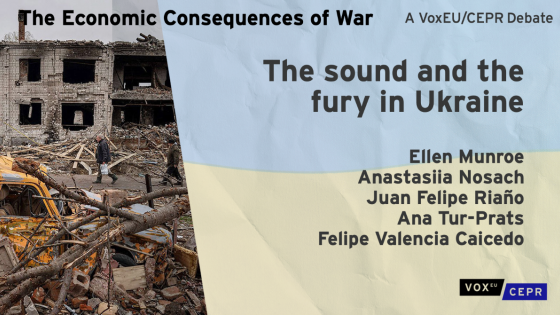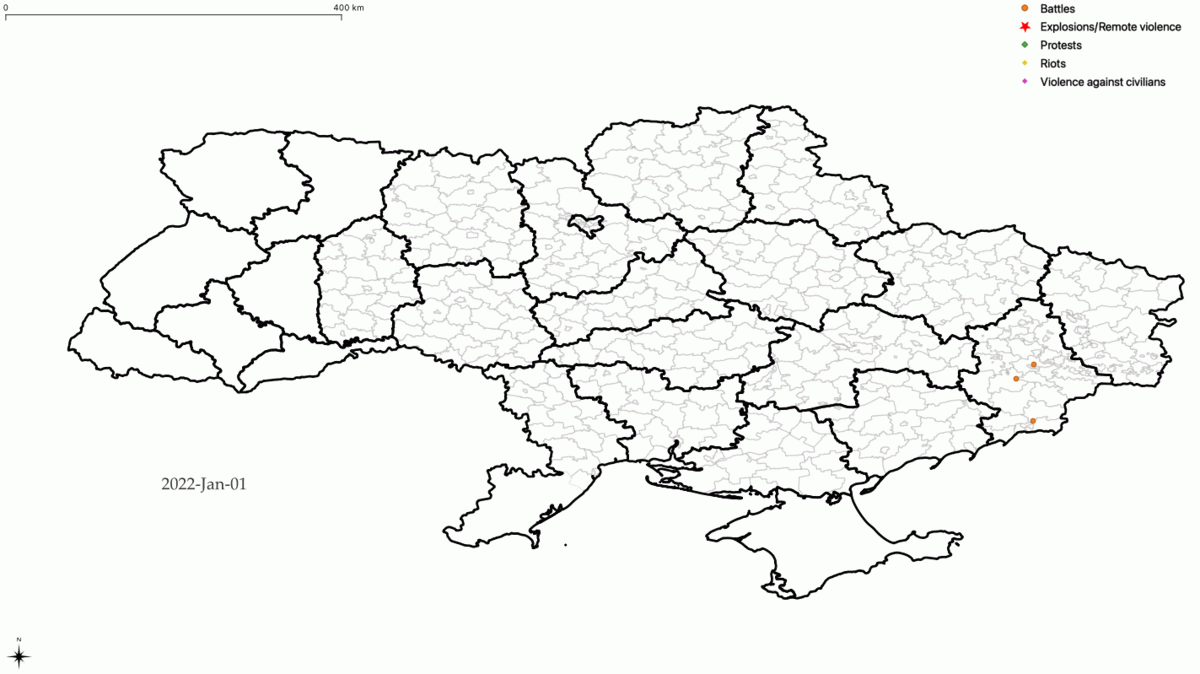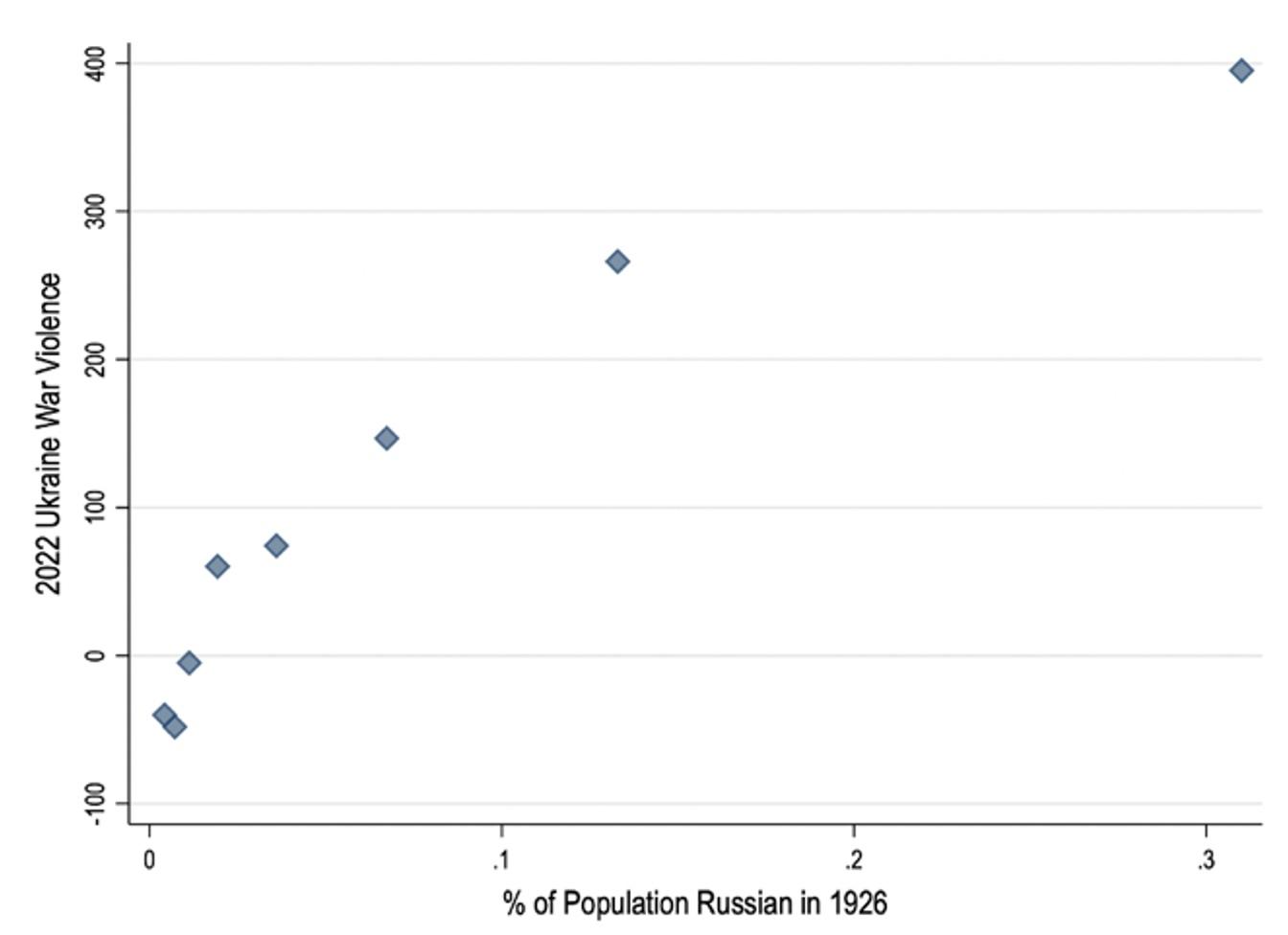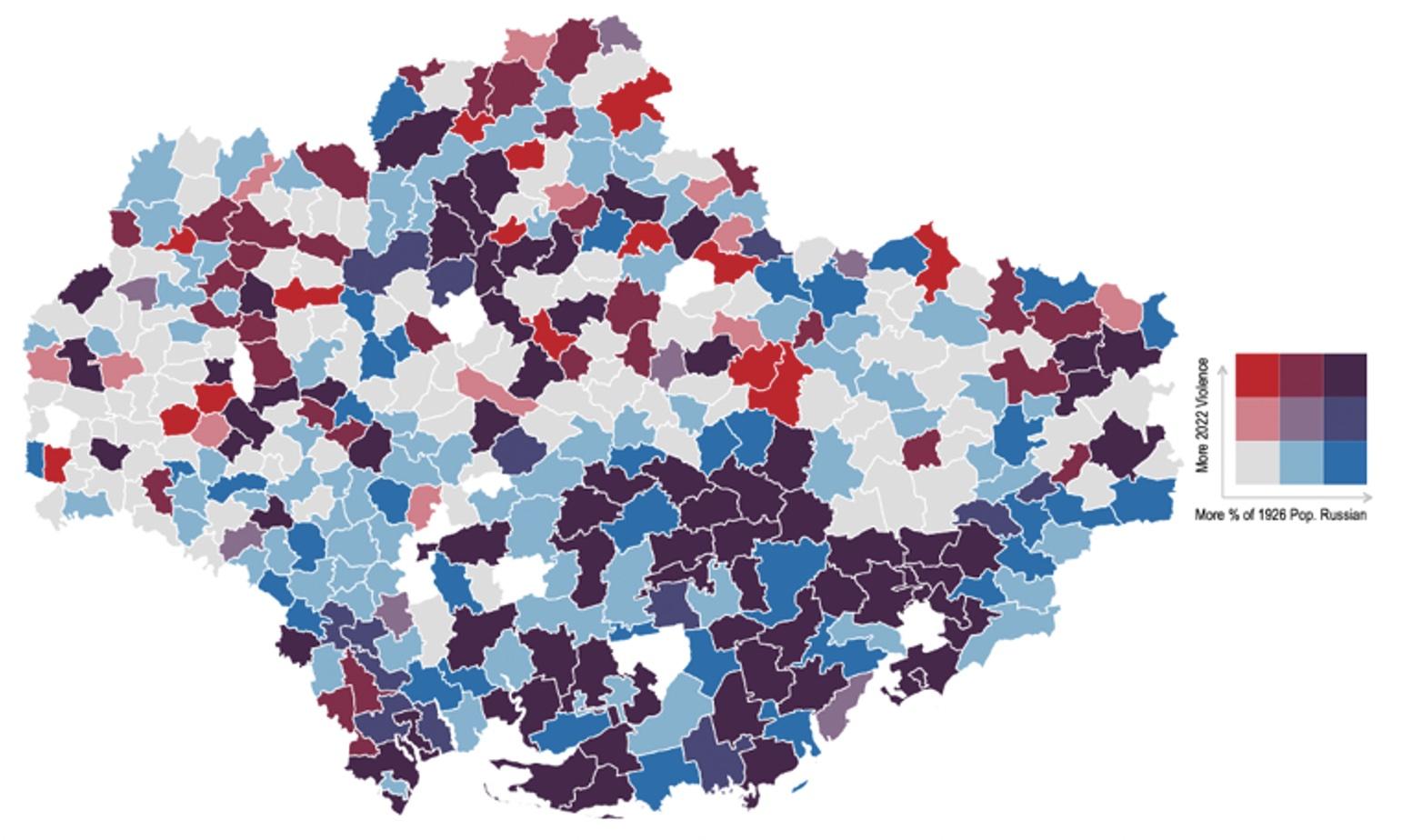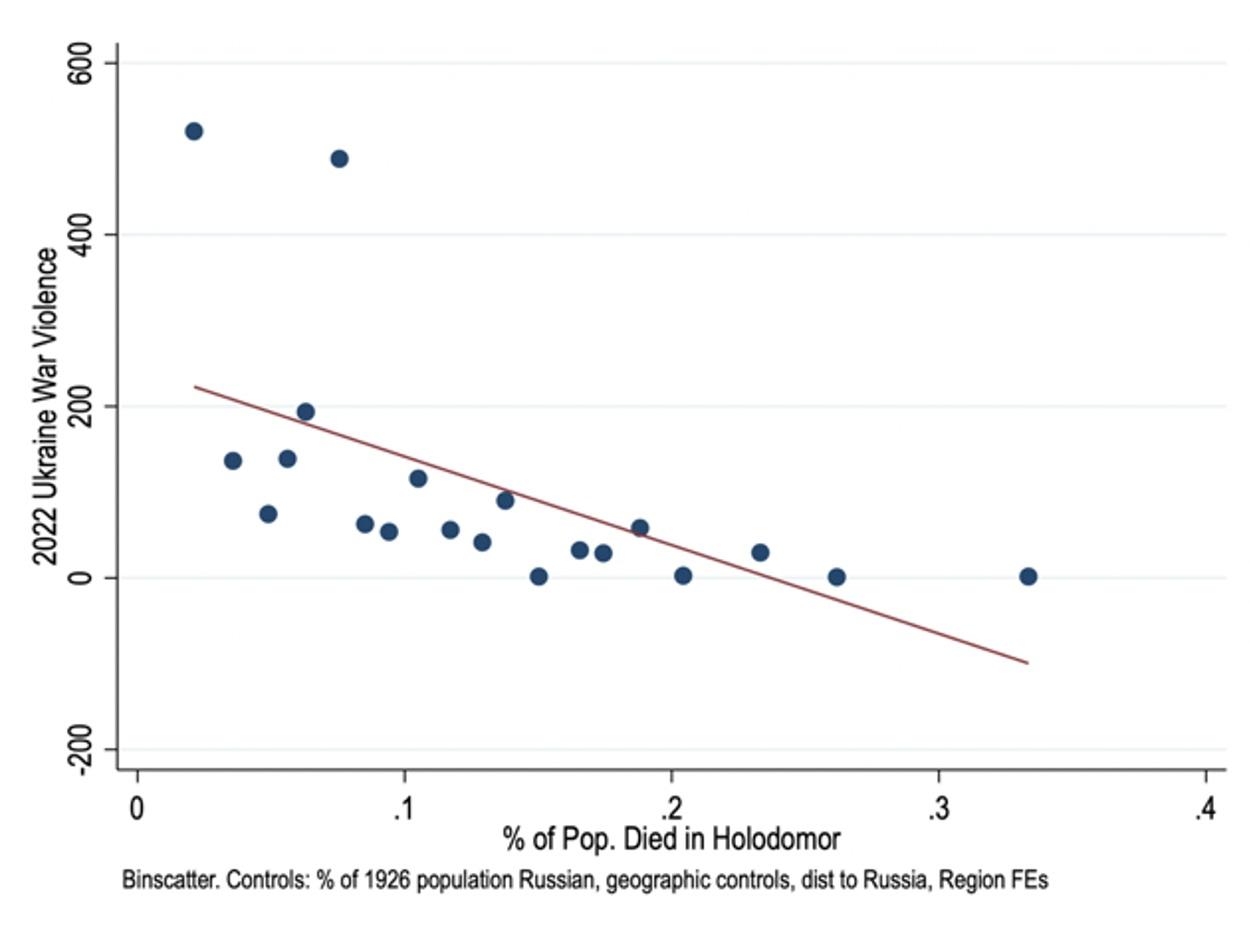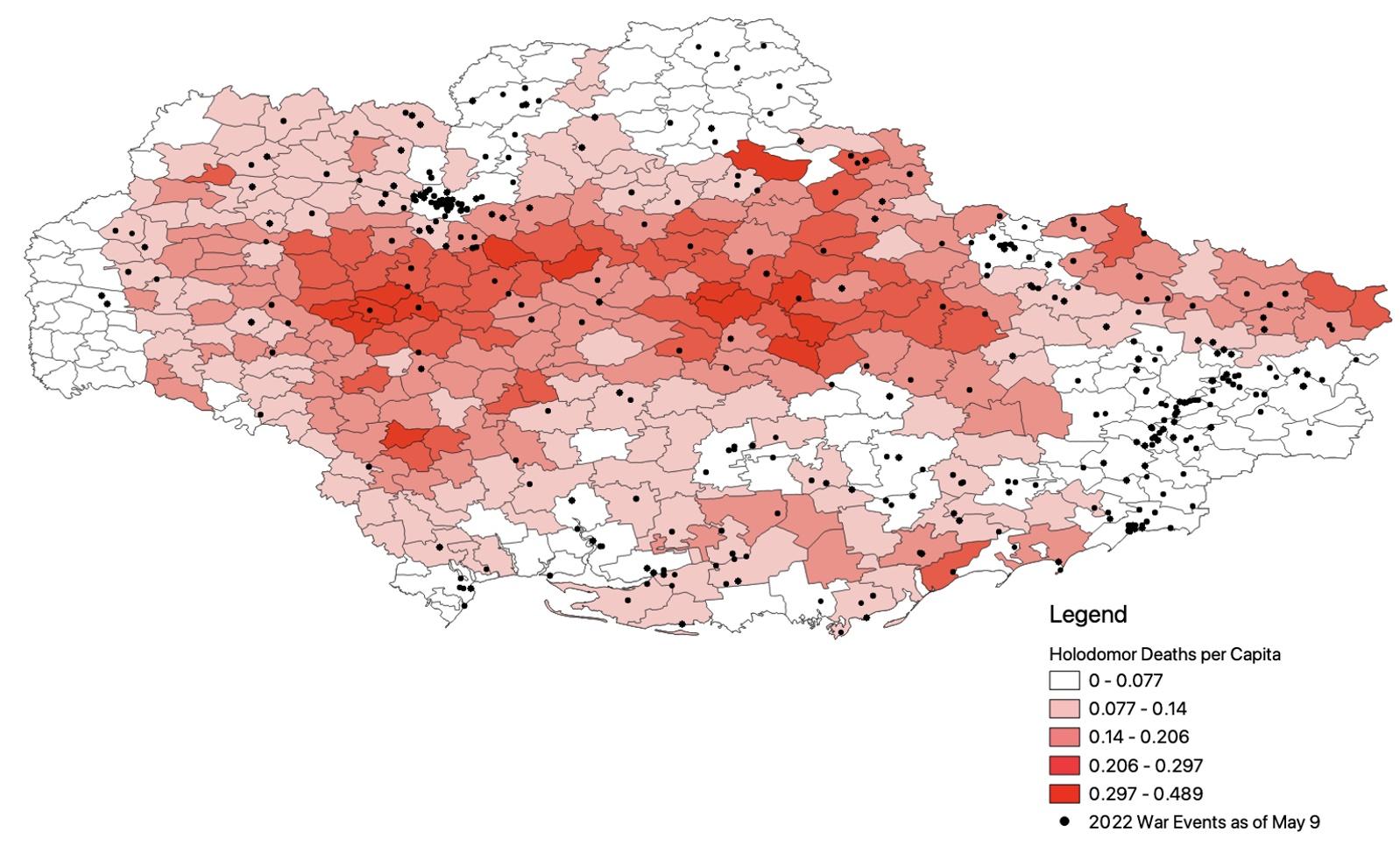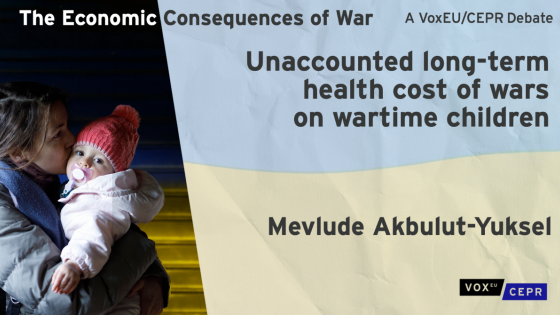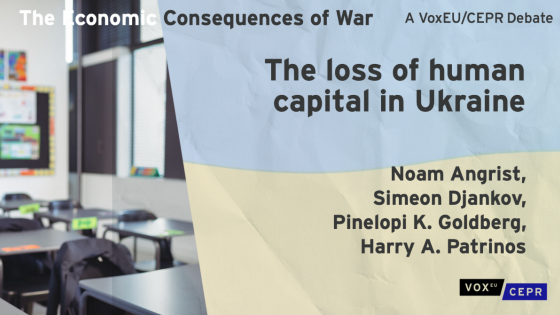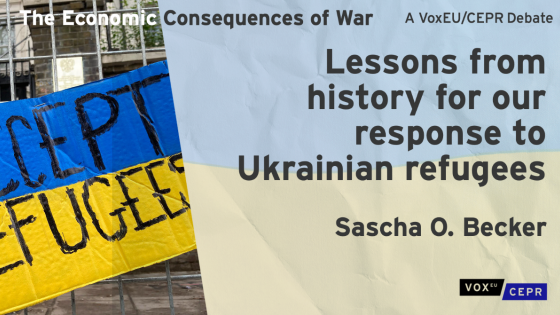As we have recently seen, the destructive nature of conflict is hard to overemphasise (Ray and Esteban 2017, Blattman and Miguel 2010, Bauer et al. 2016), yet its long-term consequences have proven more elusive to assess empirically. Several studies, stressing postwar recovery, have found no long-lasting economic impacts of the bombings in Japan, Germany, and Vietnam (Davis and Weinstein 2002, Brakman et al. 2004, Miguel and Roland 2011, respectively).1 In the very long term, Charles Tilly postulated that war made the state, and that states made war, through enhanced fiscal capacity (Gennaioli and Voth 2015, Dincecco and Onorato 2018).
Evidence on the long-term impact of historical bombing
A series of papers have revisited the existing evidence with new data, econometric tools and studying different contexts. For Vietnam, Dell and Querubin (2018), show that US bombing led to more anti-American sentiment, using both an instrumental variables strategy and a spatial regression discontinuity design. Adena et al. (2020) find that Allied bombing and propaganda undermined German morale during WWII, exploiting exogenous variation in weather conditions. Redding and Sturm (2016) and Dericks and Koster (2018) use the blitz of London during WWII to study neighbourhood effects and agglomeration economies. For that same conflict, Harada et al. (2020) show that neighbourhoods in Tokyo more affected by the air raids have lower social capital today.
Building on this literature, in Riaño and Valencia Caicedo (2020), we evaluate the enduring effects of the US government’s ‘Secret War’ in Laos (1964 -1975). As a result of one of the most intensive aerial bombing campaigns in human history, Laos is now severely contaminated with unexploded ordnance, which has impaired Laotians’ health, education, and migration choices. These factors have in turn hindered the structural transformation and economic growth of the country, which remains one of the world’s poorest. These findings for Laos – especially with regards to the role of unexploded ordnance contamination – extend to other war-torn countries. On the other hand, Chiovelli et al. (2018), stress the large economic benefits of clearing the landmines left after the Mozambican Civil War (1977-1992). Lin (2020) studies the problem in Cambodia, which neighbours Laos, finding that agricultural land has become less productive due to unexploded ordnance. Moreover, Fergusson et al. (2020) show that political conflict during La Violencia (1948-1958) period in Colombia also slowed down structural transformation there.
Empirical evidence on political repression
The issue of violent repression of civilians during war is particularly relevant to the current context of the war in Ukraine. Existing work in political science has already examined the long-lasting impact of Soviet repression. Lupu and Peishakin (2017) find that political violence shapes political identities among Crimean Tatars. Descendants from those that suffered the most during Soviet times identify more strongly with their ethnic group and hold more hostile views towards Russia today. Rozenas et al. (2017) also stress the intergenerational impact of indiscriminate violence on political behaviour. In a tragically relevant case – involving deportations to Siberia – they document that people are less likely to vote for ‘pro-Russian’ parties later on in areas where Stalinist repression was strongest in western Ukraine. For identification they use both an instrumental variables strategy (based on railway networks) and a fuzzy regression discontinuity design across Soviet rayons. In a follow up paper, Rozenas and Zhukov (2019) show that indiscriminate and ‘credible’ repression can induce political obedience. Specifically, they show that Ukrainian communities that were more exposed to Stalin’s ‘terror by hunger’ behaved more loyally towards Moscow in the future. Their identification strategy exploits exogenous variation in local famine mortality due to weather shocks.
The findings for Soviet repression extend to other contexts. Fontana et al. (2018) study the impact of the Nazi occupation of Italy at the end of WWII. They find that where this occupation was stronger, the Communist party – which was active in the resistance movement – gained more votes during the postwar period. These long-term effects are at the expense of centrist parties. For identification, the authors use a regression discontinuity design along the Gothic Line, an important defensive line that crossed northern Italy. Cannella et al. (2021) reach similar conclusions for Norther Italy, along with lower political participation. Bühler and Madestam (2022) examine the long-term political effects of the Khmer Rouge in Cambodia. They find that in places closer to the Killing Fields, people vote more and do so for the opposition party. For identification, they use exogenous shocks to rice productivity, a keystone of the authoritarian regime.
In Tur-Prats and Valencia Caicedo (2020), we examine the cultural and political legacies of the Spanish Civil War, focusing on political repression. We find a significant, negative, and sizable relationship between political violence and generalised trust, which extends to trust in institutions more associated with the Civil War. We also find a long-lasting impact on voting during the democratic period from 1977 to 2019, corresponding to the political repression carried out in the Aragon region, consistent with the results above on credible repression and targeted political violence. For identification, we exploit deviations from the initial military plans of attack in an instrumental variables framework and a geographical regression discontinuity design along the battlefront of Aragon. In terms of mechanisms of persistence, we find lower levels of political engagement and differential patterns of collective memory about this traumatic historical event.
Our results echo those found in other settings, or for shorter time periods. Bautista et al. (2020) show that in places closer to military bases people voted against Pinochet’s dictatorship in Chile. Rohner et al. (2013) find that conflict in Uganda decreased generalised trust and increased ethnic identity. Using experimental evidence from Tajikistan, Cassar et al. (2013), show that exposure to violence undermined trust and participation in market transactions. Alacevich and Zejcirovic (2020) also find that individuals living in more violent areas during the Yugoslavian War in Bosnia and Herzegovina are less trusting and politically active today.
Preliminary evidence on the Russian–Ukrainian conflict
The war in Ukraine is an ongoing military conflict between Russia and Ukraine, which can be dated to February 2014, with the annexation of Crimea and the war in Donbas – after the Euromaidan protests and Revolution Dignity, in Kyiv. The Russian occupation of the Donetsk and Luhansk oblasts in Eastern Ukraine was followed by an all-scale invasion of the country by Russian military forces, including bombings of military and civilian targets. It is now estimated that almost 3,500 civilians have died in the confrontation, while approximately 5,000 soldiers have died on each side. Both bombings (specifically, unexploded ordnance) and civilian repression (including mass graves) have been important features of the struggle.
For our empirical analysis for this column, we use geo-localised data from the ACLED project (see Figure 1), municipal level data from Zhukov (2022) on the ongoing struggle, and Rozenas and Zhukov (2017) on historical ethnicities – originally from the 1926 Census – and historical Soviet repression, including the Holodomor famine. We also employ a large set of potentially relevant controls such as elevation, agricultural suitabilities for wheat, potato, maize, flax, and barley, forest cover and distance to the Russian border from FAO, and the aforementioned sources. Results are updated daily, so we report here regressions for 9 May 2022, a historic date for Russia (Victory Day) and a significant one for the current conflict.
Figure 1 Evolution of the Ukrainian conflict
Notes: Data are from the Armed Conflict Location and Event Data Project (ACLED) on the Ukraine Crisis: https://acleddata.com/ukraine-crisis/#analysis. The figure reports the date and location of explosions, violence against civilians, battles, riots, and protests from 1 January 2022, to 13 May 2022.
First, we find a positive, significant, and robust correlation between ethnic Russians in Ukraine in 1926 and current attacks. We observe this positive association in Figure 2 using ‘binsreg’ estimation (i.e. a regression of binned variables, see Cattaneo et al. 2021). This relationship is also visible in the map in the bottom panel, where areas with both more attacks and higher historical Russian ethnic populations appear in purple. These include border areas, such as Donbas and Luhansk, as well as districts at the South (Mariupol and Odessa) and the centre of the country. The relationship with this historical correlate is striking, but we recognise that other omitted factors could be driving the result. Politically, invading territories with Russian population has been used as motivation by Russian propaganda. Targeting places where ethnic Russians reside could be a tactical strategy hoping to garner support and eventual territorial control.2 Lastly, the findings are consistent with a Russian nationalist doctrine of irredentism.3
Figure 2 Ukraine violence and 1926 Russian population
a)
b)
Notes: Panel (a) shows a ‘binsreg’ plot with 8 bins (N=380), with controls for historical Soviet violence, geographic variables, distance to Russia and region fixed effects. Panel (b) is a bivariate map, with purple regions depicting areas with more 2022 Ukrainian violence and a higher proportion of Russians historically. Ukraine conflict data until 9 May 2022.
Second, we examine the relationship between the Holodomor famine and modern conflict. The Great Famine or Holodomor was a famine occurring from 1932 to 1933, which killed approximately 3.9 million people (Naumenko 2019). Results can be seen in Figure 3: areas where famine severity was higher in the past correspond with those that have had less confrontations in the modern struggle and where opposition to the invasion has been stronger. This could be – related to the previous point – because these happen to be areas with more ethnic Ukrainians historically, in line with the findings of Markevich et al. (2021), as well as places where resistance has been stronger.
Figure 3 Ukraine 2022 Violence and Holodomor Severity
a)
b)
Notes: Panel (a) is a ‘binscatter’ of events in the 2022 war in Ukraine and the percentage of the rayon’s population that died in the Holodomor famine (N=380). Panel (b) is a heatmap with darker red depicting higher proportion of famine deaths, and the black dots representing events in the 2022 war in Ukraine. Ukraine conflict data is from 9 May 2022.
We defer and invite more interpretations, while acknowledging the lack of a proper identification strategy, though several have been suggested in the literature (Rozenas and Zhukov 2019). We do note, however, that our empirical results are robust to controlling for the large set of controls described before, including distance to Russia, hold for areas at 200 kilometres from the Ukrainian border and for different types of violence classified in the modern data, such as airstrikes, anti-air defence, tank battles, arrests, and Russian initiated attacks. Notably, they do not hold for other ethnic minorities, such as the Germans, in a placebo-type exercise. In a horserace with the two historical covariates, we find that both coefficients are of similar magnitude, but are marginally stronger for the Russian ethnicity results.
Naturally, not enough time has passed for a long-term analysis of the current struggle, but the findings from the historical bombing and political repression literatures surveyed above suggest a bleak future for the affected areas, beyond the current humanitarian catastrophe. We focus here on bombing and civilian repression, but acknowledge that there are other historical and modern elements at play in the current war, such as migration (Becker 2022) political preferences (Grosjean 2022), and sanctions (Guriev 2022), pointing the reader towards these and other important contributions in this valuable debate on VoxEU.
References
Adena, M, R Enikolopov, M Petrova and H-J Voth (2021), “Bombs, Broadcasts and Resistance: Allied Intervention and Domestic Opposition to the Nazi Regime During World War II”, Working Paper.
Alacevich, C and D Zejcirovic (2020), “Does Violence Against Civilians Depress Voter Turnout? Evidence from Bosnia and Herzegovina”, Journal of Comparative Economics 48(4): 841-865.
Bauer, M, C Blattman, J Chytilová, J Henrich, E Miguel and T Mitts (2016), “Can War Foster Cooperation?”, Journal of Economic Perspectives 30(3): 249–74.
Bautista, M A, F González, L R Martinez, P Muñoz and M Prem (2020), “Chile’s Missing Students: Dictatorship, Higher Education and Social Mobility”, Working Paper.
Becker, S (2022), “Lessons from history for our response to Ukrainian refugees”, VoxEU.org, 29 March.
Blattman, C and E Miguel (2010), “Civil War”, Journal of Economic Literature 48(1): 3–57.
Brakman, S, H Garretsen and M Schramm (2004), “The Strategic Bombing of German Cities During World War II and its Impact on City Growth”, Journal of Economic Geography 4(2): 201–218.
Bühler, M and A Madestam (2022), “State Repression, Exit, and Voice: Living in the Shadow of Cambodia’s Killing Fields”, Stockholm University.
Cannella, M, A Makarin and R Pique (2021), “The political legacy of Nazi Annexation”, Working Paper.
Cassar, A, P Grosjean and S Whitt (2013), “Legacies of Violence: Trust and Market Development”, Journal of Economic Growth 18(3): 285–318.
Cattaneo, M C, R Crump, M Farrell and Y Feng (2021b), “Binscatter Regressions”, Working Paper.
Chiovelli, G, S Michalopoulos and E Papaioannou (2018), “Landmines and Spatial Development”, NBER Working Paper No 24758.
Davis, D R and D E Weinstein (2002), “Bones, Bombs, and Break Points: The Geography of Economic Activity”, American Economic Review 92(5): 1269–1289.
Dell, M and P Querubin (2018), “Nation Building Through Foreign Intervention: Evidence from Discontinuities in Military Strategies”, The Quarterly Journal of Economics 133(2): 701–764.
Dericks, G and H R A Koster (2018), “The Billion Pound Drop: The Blitz and Agglomeration Economies in London”, Journal of Economic Geography 21(6): 869-897.
Dincecco, M and M Onorato (2017), From warfare to wealth: The military origins of urban prosperity in Europe, Cambridge University Press.
Fergusson, L, A M Ibàñez and J F Riãno (2020), “Conflict, Educational Attainment, and Structural Transformation: La Violencia in Colombia”, Economic Development and Cultural Change 69(1): 335-371.
Fontana, N, T Nannicini and G Tabellini (2018), “Historical Roots of Political Extremism: The Effects of Nazi Occupation of Italy”, Working Paper.
Gennaioli, N and H-J Voth (2015), “State Capacity and Military Conflict”, The Review of Economic Studies 82(4): 1409–1448.
Grosjean, P (2022), “Conflict, empires, and political preferences”, VoxEU.org, 28 March.
Guriev, S (2022), “Russia under sanctions. The political economy of Putin’s war in Ukraine”, VoxEU.org, 14 March.
Harada, M, G Ito and D M Smith (2020), “Destruction from Above: Long-Term Legacies of the Tokyo Air Raids”, Working Paper.
Lin, E (2022), “How War Changes Land: Soil fertility, unexploded bombs, and the underdevelopment of Cambodia”, American Journal of Political Science 66(1): 222-237.
Lupu, N and L Peisakhin (2017), “The Legacy of Political Violence Across Generations”, American Journal of Political Science 61(4): 836–851.
Markevich, A, N Naumenko and N Qian (2021), “The political-economic causes of the soviet great famine, 1932-33”, NBER Working Paper No 29089.
Miguel, E and F Roland (2011), “The Long-Run Impact of Bombing Vietnam”, Journal of Development Economics 96(1): 1–15.
Naumenko, N (2021), “The Political Economy of Famine: The Ukrainian Famine of 1933”, The Journal of Economic History 81(1): 156-197.
Ray, D and J Esteban (2017), “Conflict and Development”, Annual Review of Economics 9(1): 263–293.
Redding, S J and D M Daniel (2016), “Estimating Neighborhood Effects: Evidence from War-time Destruction in London”, Working Paper.
Riaño, J F and F Valencia (2020), “Collateral Damage: The Legacy of the Secret War in Laos”, Working Paper.
Rohner, D, M Thoenig and F Zilibotti (2013), “Seeds of Distrust: Conflict in Uganda”, Journal of Economic Growth 18(3): 217–252.
Rozenas, A, S Schutte and Y M Zhukov (2017), “The Political Legacy of Violence”, The Journal of Politics 79(4): 1147–1161.
Rozenas, A and Y M Zhukov (2019), “Mass Repression and Political Loyalty: Evidence from Stalin’s Terror by Hunger”, American Political Science Review 113(2): 569–583.
Tur-Prats, A and F Valencia Caicedo (2020), “The Long Shadow of the Spanish Civil War”, Working Paper.
Zhukov, Y M (2022), VIINA: Violent incident information from news articles on the 2022 Russian invasion of Ukraine, University of Michigan, Center for Political Studies.
Endnotes
1 As noted by Sascha Becker, the psychological costs of conflict can still be immense.
2 We thank Dominic Rohner for this point.
3 We thank Shanker Satyanath for guiding us towards this interpretation.
